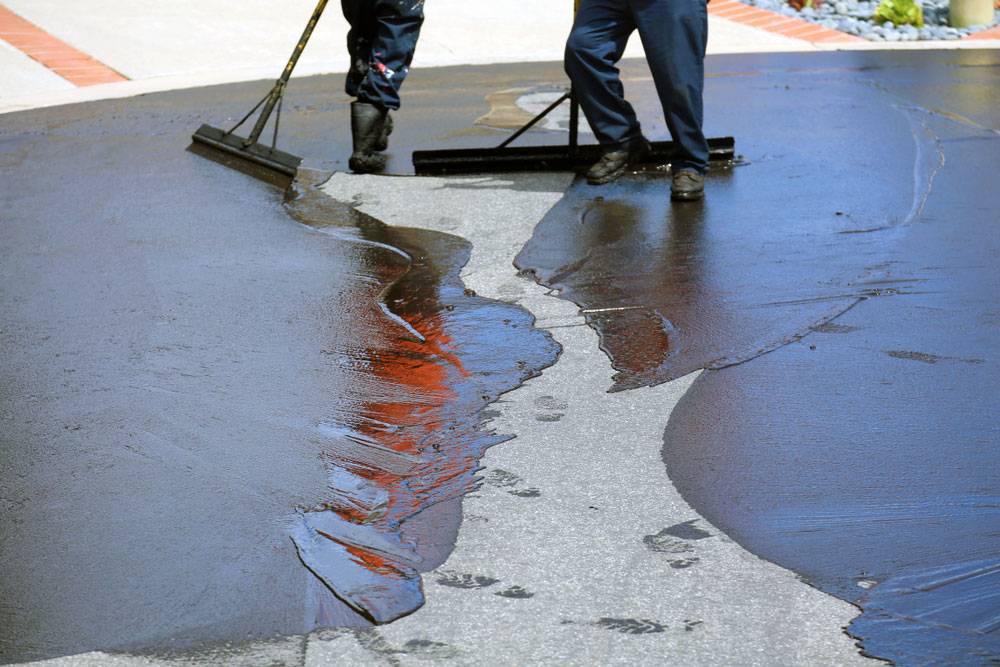When it comes to maintaining your asphalt surfaces, knowing how often to schedule sealcoating can make a significant difference in their longevity and appearance. Generally, it’s recommended every two to three years, but this can vary based on several factors.
Understanding these factors is crucial to making informed decisions about your maintenance schedule. So, what influences the frequency of sealcoating, and how can you tell when it’s time to reapply?
Factors Influencing Sealcoating Frequency
Determining how often to sealcoat your asphalt depends on several important factors. Understanding these variables can help you plan effective maintenance and extend your pavement’s life.
Climate and Weather Conditions
Environmental exposure plays a big role in sealcoat wear.
- Hot climates can dry out and crack asphalt more quickly
- Heavy rain and freeze-thaw cycles accelerate surface breakdown
- UV exposure fades and weakens the pavement over time
Traffic Volume and Surface Usage
The more use your asphalt gets, the more often it may need attention.
- High-traffic areas like driveways, car parks, and roadways wear down faster
- Heavy vehicles can compress and crack the surface
- Low-traffic zones may require less frequent sealcoating
Age and Condition of the Asphalt
Older or already damaged asphalt needs more regular maintenance.
- Surfaces over five years old typically need closer monitoring
- Cracks, fading, and surface wear signal the need for sealcoating
- Recently installed asphalt generally doesn’t require sealing for the first 6–12 months
Budget and Maintenance Planning
Your budget will affect how often you can schedule this maintenance.
- Sealcoating is cost-effective over time, preventing expensive repairs
- Setting a maintenance budget helps you plan consistent upkeep
- Delaying sealcoating can result in higher long-term repair costs
By weighing these factors, you can develop a sealcoating schedule tailored to your surface’s needs, ensuring durability, safety, and a polished appearance.
Recommended Schedule for Sealcoating
To keep your asphalt in excellent condition, it’s crucial to follow a proper sealcoating schedule.
General Sealcoating Timeline
- Every 2-3 years is the ideal schedule for most asphalt surfaces.
- This regular maintenance helps protect against harsh weather, UV damage, and wear and tear.
Factors That May Require More Frequent Sealcoating
- Increased Traffic: High traffic areas experience more wear, requiring earlier reapplications.
- Extreme Weather Conditions: Harsh climates, such as intense heat or heavy rainfall, can accelerate surface degradation.
By adhering to a regular sealcoating schedule and adjusting for environmental factors, you ensure that your asphalt stays protected and functional for years to come.
Signs It’s Time to Reapply Sealcoating
Sealcoating is essential for preserving your asphalt, but how do you know when it’s time for a fresh application? Watch for these telltale signs to keep your surface in top shape.
Visible Cracks Forming
Even small cracks can be early warnings.
- Hairline cracks indicate surface deterioration
- Cracks allow moisture to seep in, weakening the base
- Ignoring them leads to costly repairs later
Faded or Dull Surface Appearance
Discoloration is a sign the protective layer is wearing thin.
- A faded gray tone replaces the rich black finish
- UV damage and oxidation contribute to surface wear
- Restoring the seal revives both function and appearance
Water Pooling on the Surface
Proper drainage is essential for pavement health.
- Pooling water means the sealcoat is uneven or compromised
- Prolonged exposure can cause cracks and potholes
- Sealcoating helps restore smooth, water-resistant surfaces
Persistent Oil Stains or Chemical Spills
Contaminants can weaken asphalt if not addressed.
- Oil and chemical stains are harder to clean on unsealed surfaces
- They break down the binder holding asphalt together
- A new sealcoat layer adds protection against future spills
Regular visual checks help you catch these problems early. Reapplying sealcoating at the right time ensures your asphalt stays strong, attractive, and long-lasting.
Staying consistent with your asphalt sealcoating schedule is key to preserving the strength, appearance, and lifespan of your pavement. Whether you’re managing a residential driveway or a busy commercial lot, recognizing the signs of wear and accounting for environmental and usage factors will help you make timely decisions.
Proactive maintenance not only enhances curb appeal but also saves money in the long run by avoiding major repairs.

